SEARCH






|
|
|
|


Jaco Marx's body of work is amazing and outstanding. He had great interest in Nature- Travel- Wildlife- Landscape- Wilderness photography and even more... He wants us to experience a glimpse of the beauty surrounding us and his images witness a tremendous respect for Mother Earth wherever he take his pictures. Jaco quotes: “To be honest, the thing that had me take up my camera was a drive for conservation. This in the end is even more important than the most beautiful photo taken. Photography is one of the strongest tools in conservation of fauna and flora. We need to be awaken! We need to take charge before it's too late. Caring for this planet is our duty, I proudly make a stand to do whatever I can to save this beautiful land, river, forest...”
Today, we will have a glimpse on the person behind his splendid images.
Briefly tell us about yourself, your hobbies and other jobs:
My name is Jaco Marx. I live and work as a dental surgeon in central South Africa. Finishing my dentistry studies in 2005, I have been working in a practice with four dentists.
I consider myself to be an outdoor person and always enjoy spending time with my family in nature. I enjoy fly fishing and have been doing it since 1992 with my father, visiting wonderful places including Norway, Seychelles, Mozambique, Botswana to fish for salmon, tiger fish and king fish.
I also enjoy music; leading church music and playing rhythm guitar with vocals.
From this right-hemisphere creative urges developed my appreciation for nature and beauty in nature; more specifically animals and animal interaction in nature. This pertains mostly to African fauna.
How has your history and life experiences affected your photography?
Because I had the opportunity to travel a lot as I was growing up, I was able to experience a lot of different parts of the natural world.
The stark contrasts between the beautiful Namib desert and the white powder beaches of La Digue in the Seychelles fascinated me. The way numbers exceeding a million wildebeest can traverse the plains of East Africa left me speechless. To see the Victoria falls in all her might left me awe-inspired.
From this I realized the need to capture these moments on camera in a way that is appealing and to display the beauty of nature for the viewer to enjoy.
Which are your most important experiences that have influenced your art?
I am personally very angry at trophy hunting; especially for big cats like lion, leopard and cheetah. Unfortunately this happens on a daily occurrence in South Africa, Namibia and Zimbabwe. Other animals also affected are rhino and elephant.
After doing a lot of reading and research on this, I realized the little good that comes from a hunt like this, considering how a local community truly benefits from a hunt like this.
This motivated me to show people the beauty of animals roaming free. This motivated me to use my photography as a conservation tool: on the one hand to view the image and to show the beauty of nature, but also to use the income from my work to support conservation initiatives.
What first attracted you to photography?
I was walking in a book store and came across the very first work of Nick Brandt: “On this Earth”.
I picked it up and was hooked immediately. Something happened that day. I can even remember planning when I will make my first trip to the camera shop to get this journey started. I bought my first camera: Canon 350D!
Describe your overall photographic vision:
I want to capture African fauna and have people buy my images to have a piece of Africa on their walls.
That was one of my first goals.
Secondly, I am always looking for ways to get involved with organizations and foundations to fight for conservation on the African continent.
Lastly, I use money generated from my photographic art to contribute financially to above-mentioned conservation organizations.
Why are you so drawn by Wildlife Photography?
Living in Africa gave me ample opportunity to photograph all over South Africa and Southern Africa, including Botswana, Namibia and Kenya.
People brought up in Africa all have certain adoration for the African fauna and flora. Because we are spoiled with such abundance in animals and natural wildscapes, we can pick and choose where we want to focus our love for nature! It is truly a privilege to be part and to enjoy creation as it is displayed in so many forms: beautiful landscapes, rough seas of maybe just a slow walk of elephants on the plains of Amboseli. Natural beauty can be found anywhere and everywhere!
What is more important to you, the mood/story behind your images or the technical perfection?
Even though some would consider these two factors goes hand-in-hand, I am personally never too much worried about my technical skills in-camera and in my post processing. I delved deeper into a creative way to visualize a scene and to make the scene perfect for a large canvass. I explored the creative parts in wildlife photography with every photographic safari.
The mood is therefore very important to me.
I did realize though that technical skill is important and improved it to make the in-field photography even more interesting and to give me more options in difficult circumstances such as low light.
What generally is your relationship to your subject matter beyond being an observer?
First of all we all need to respect the natural environment. That will be my first relationship with the fauna and flora long before I pick up any camera.
It’s important in wildlife photography not to interfere with natural interactions while in the process of safari. For example: never drive between a leopard and the prey as the leopard is hunting, observes the hunt as a silent outsider. Ethics in wildlife photography is therefore crucial.
From here, as an outsider, I would pre-judge the movement or action of the subject to give me the best opportunity to photograph the moments as they unfold. This is something wildlife photographers learn through experience to know how animals might interact and act next.
Do you prepare carefully the locations where you are intending to photograph?
Always.
Even though I am a baby of Africa, I still do a lot of reading on the specific destinations. In general, behavioural patterns of animals stays relatively constant, but every location offer something unique to the photographer. To photograph leopard in the thick bush in Sabi Sands, South Africa, is a totally different approach to photograph leopard in the arid Kgalagdi Transfrontier Park in the Kalahari Desert region. Same animal, different approach due to different landscape and different vegetation. One can also learn from research which areas are more prone to certain animals.
What gear do you use (camera, lenses, bag)?
I only use Canon gear.
My two bodies:
My lenses:
Miscellaneous:
Post processing equipment and software:
What software do you use to process your images?
In general, I will use Adobe Lightroom 6 for all my post-processing. In some cases I will also use Adobe CS6.
The Google NIK Software bundle is also one of my more frequently used software programs.
Can you tell us something more about your work flow?
I prefer quick post-processing and never ever spend a long time on post-processing in Lightroom 6. Every photograph requires different methods of post-processing to achieve what you are looking for, but some work flow techniques can be used in the majority of processing.
I have a certain way to approach all photographs after they have been imported and marked with keywords:
Even though this is very simplified and is true for general processing, the above-mentioned cycle works well for me.
What is your most important advice to a beginner in Wildlife Photography and how do you get started?
Who are your favourite photographers and more importantly, how has your appreciation of their work affected how you approach your own photography?
Nick Brandt will always be reason I started wildlife photography. His photography and post-processing truly makes me feel at home and the very important conservation message behind his photographs is what really drives me.
Is there any specific photo taken by another photographer that has inspired you a lot and why?
Without any doubt the most unbelievable picture ever taken was a photograph taken by Peter Beard of the great elephant herds of East Africa as it use to be. Thousands upon thousands of elephant photographed from the sky. And this picture was taken not even one generation ago. Since then, elephant, rhino and lion numbers have plummeted due to human-animal conflict.
Please follow link: http://peterbeard.com/756-elephants/
As described in his masterpiece: ‘The end of the game’, the interaction between humans and elephants and the constant fight for habitat is a fatal and lasting fight. There will not be happy endings in every situation, but the fight is real and the consequences very negative a majority of cases. It describes the inevitability of confrontation between humans and animals and the eventuality.
Are there any specific directions that you would like to take your photography in the future or any specific goals that you wish to achieve?
I would love to have my own exhibitions in the future. During these exhibitions I would like people not only to view my images, but to walk away inspired and with a renewed spirit for the conservation of Africa’s animals.
Describe your favourite photograph taken by you and why it is special to you?
I have a love for monochrome photographs. Even more those of African animals in a monochrome setting. The photograph I like most is not necessarily an award winning image, but has a soft spot for me personally, since this was one of the most exhilarating moments ever: to photograph lions in a hail storm on the banks of the Mara River in Kenya.
Please follow this link to the photograph
Is there anything else you wish to add and what do you think about 1X as a home base for your work?
I want to close this interview by thanking the 1x team for the highest quality of website with a very high standard of art and photography on this website. It is what makes 1x stand out from the rest.
1x also offers me a perfect home base to sell my work which only increased in the past 18 months. The way 1x connect with other big international houses, makes it possible to reach a very large audience internationally.
Check out my website
 | Write |
 | amonsak Great pictures. I love all that. |
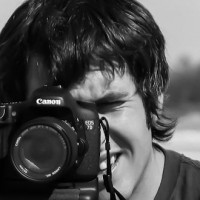 | Jaco Marx PRO Thank you very much! Appreciate the feedback! |
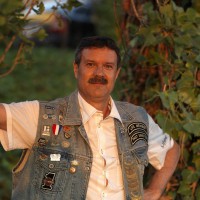 | Xavier Ortega PRO Amazing pictures and great interview Jaco. Congrats. |
 | Jaco Marx PRO Thank you Xavier, appreciate the feedback>>> |
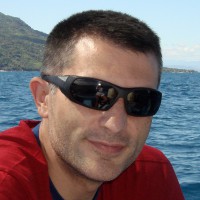 | Alessandro Catta PRO Great photos and great photographer ! |
 | Jaco Marx PRO Thanks a lot Alessandro! Appreciate>>> |
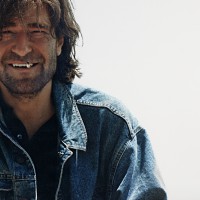 | Robert Komarek PRO Marvellous pictures, very interesting story. Congrats! |
 | Jaco Marx PRO Thank you Robert! |
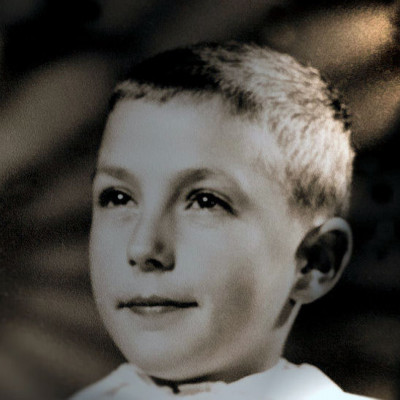 | Thierry Dufour PRO Wonderful interview of this talented photographer protector of nature. His photos are exceptional, thanks to both !!! |
 | Jaco Marx PRO Appreciate the feedback Thierry! |
 | Yvette Depaepe CREW My respect and admiration for your work, Jaco! Thank you so much for your fine collaboration. Cheers, Yvette |
 | Jaco Marx PRO Thank you Yvette (: Appreciate! |